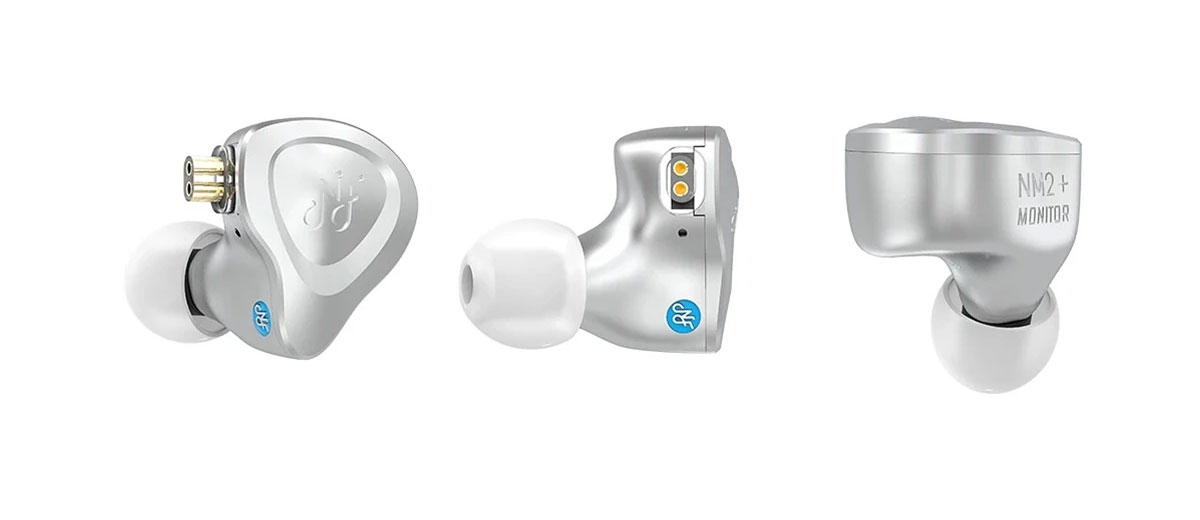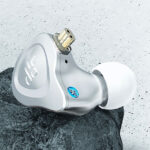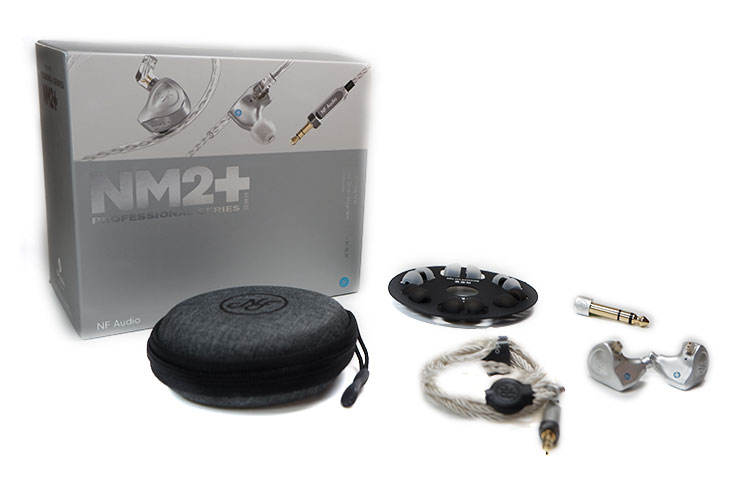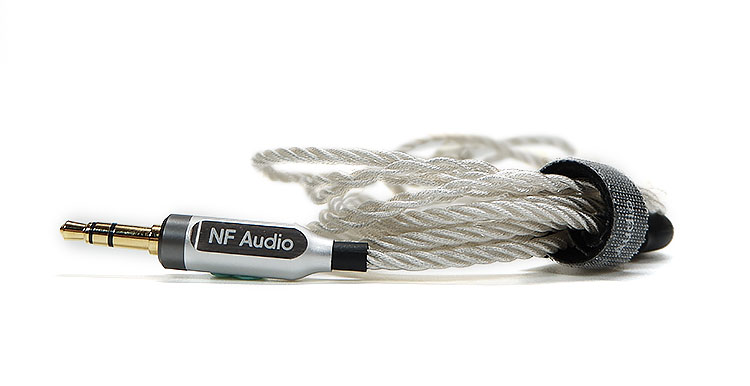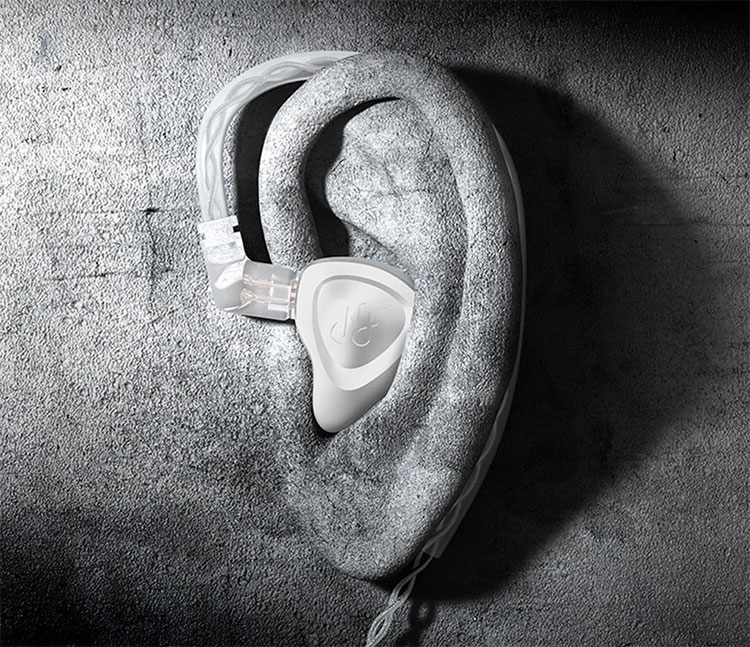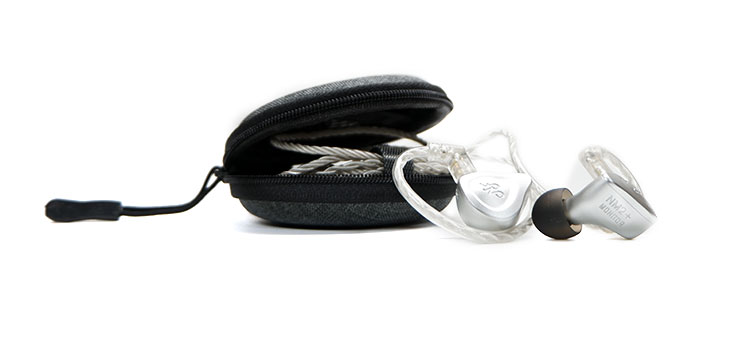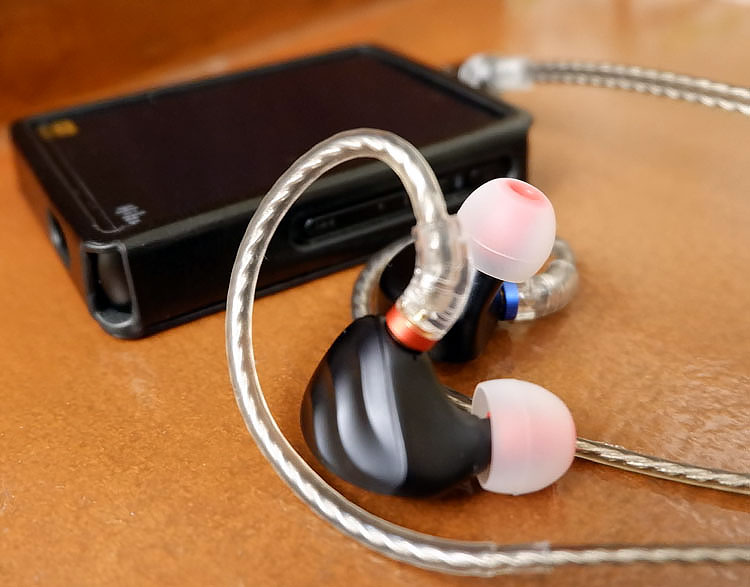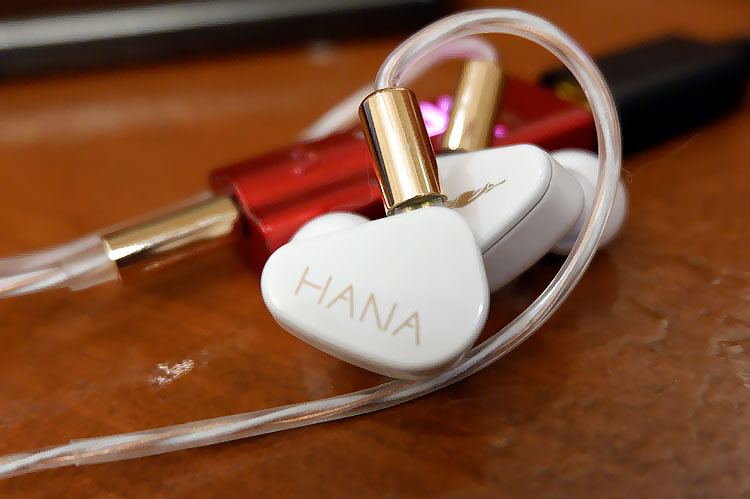The NF Audio NM2+ is an affordable universal IEM featuring a dual-cavity dynamic driver dual design and 5-axis CNC technology. It is priced at $169.
Disclaimer: The NF Audio NM2+ sent to us is a sample in exchange for our honest opinion. We thank the team at Shenzhen Audio for giving us this opportunity.
To read more about NF Audio products we have previously reviewed on Headfonics, click here.
Note, this review follows our new scoring guidelines for 2021 which you can read up on here.
NF Audio is a pioneer in producing CIEMs in China, and they have been operating out of Shenzhen since 2014. They have been producing IEMs and CIEMs with the principle of being “the in-ear artist”.
It is with this principle that NF Audio keeps pushing the boundaries of making their IEMs better, prettier, more detailed, and more comfortable. This is how NF audio intends to bring the listener closer to the emotions that the musician wants to convey.
With their drive to pushing the limits of their technology, NF Audio has just recently released their latest IEM, the NM2+.
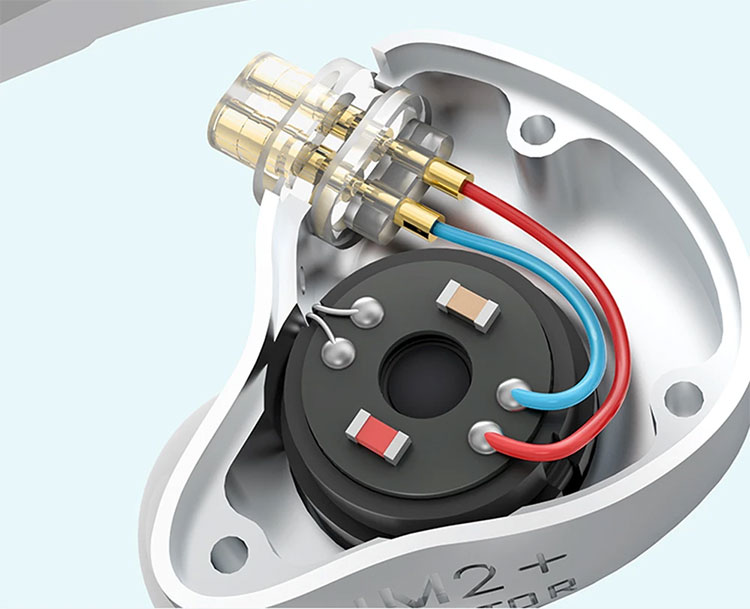
Tech Inside
The NM2+ has aluminum shells that have gone through a 5-axis CNC process that created a dual cavity design inside the shells. Inside the shells are dynamic drivers that are tuned to produce the full range of frequencies.
The NM2+ has also be optimized to have an ergonomic design and has been designed to be used in many environments including monitoring on stage.
Packaging & Accessories
The box that NF Audio decided to use for the NM2+ seems to give a bit of a nostalgic feel since it has a similar shape to old CD cases.
Opening the box continues the theme of it being an old CD since the IEM shells are securely arranged inside a round foam piece. NF Audio not only considered how good their package would look but also ensured that all the components are secure during transport and storage.
Underneath the foam piece, NF Audio was kind enough to include 2 sets of ear tips in 3 different sizes. They have also taken the time to label the 2 types of ear tips, one is labeled as balanced, and the other is labeled as bass.
The cable that was provided is a loop design, with 0.78mm terminations on the IEM side, and it terminates to a 3.5mm TRS connection at the other end. The cables are pre-formed to ensure a comfortable and secure fit.
Also included is a 3.5mm to ¼” adaptor and a soft case that perfectly fits the NM2+ and keeps it secure while it’s inside your bag.
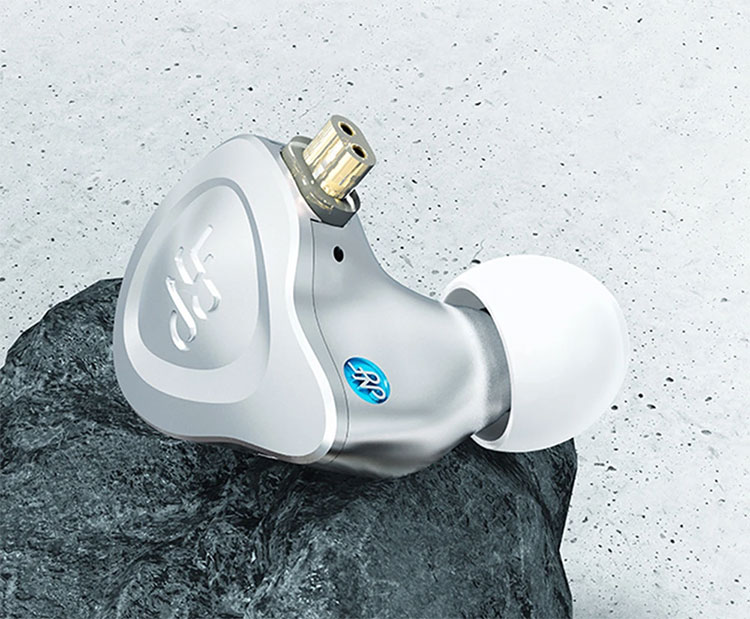
Design
The IEM shells are made of aluminum with a matte silvery finish, which seems resistant to scratches. Each shell has the NF Audio logo, as well as the words NM2+. The NM2+ has a neat aesthetic with most of the parts being silver, except for the blue accents that are just enough to prevent it from becoming mundane.
When designing IEMs, attention to small details will make a huge difference. A simple thing that the NF Audio was able to do is to add left and right markings that are clear and visible on both the shells as well as the cables, though color-coded markings would have been an even better addition.
The connecting point between the IEM shells to the cable has a protruding stem with a smooth pin connection lock. The connection both from the shells to the cable, and the 3.5mm TRS connection look sturdy and well made enough to last quite a few insertion cycles.
Stock Cable
The 5N silver-coated OFC cables make a great aesthetic match with NM2+ shells, but the cable is also well built. The cable is braided tightly and doesn’t seem to want to unravel anytime soon.
The terminations on the cable are also well made, with the 0.78mm connectors covering the connection points on the shells. The 3.5mm TRS connection is made of aluminum with NF Audio etched on the connector body and a standoff for when your DAP or your phone has a case.
The splitter on the cable also sports the NF Audio branding, and the slide adjustment mechanism is made of aluminum.
All these things will make a good cable, but making sure that the cable doesn’t tangle too much takes it home in my opinion. The cable that the NM2+ comes with is relatively tangle-free, and it isn’t that hard to unravel the cable once it’s removed from the case.
Comfort & Isolation
When I first took the IEMs out of the box, I found that the shells have a significant amount of heft, and I worried that it might become burdensome when worn.
Despite being quite heavy, NF Audio ensured that the NM2+ has a proper ergonomic design that distributes the weight of the shells so that it won’t be bothersome. The weight also gives an impression of robustness for the entire system.
The provided ear tips come in 3 sizes, and I believe that the ones that are provided make a good seal inside the ear canal. Outside noise will be kept at a minimum with the NM2+, while still not being too sealed in.
Ear tips
The NM2+ came with 2 sets of ear tips, and it’s nice that NF Audio decided to label the expected sound signature from each of the ear tips. I first tried the ones that are labeled balanced, and they sounded clear but somewhat lacking in the bass region while ending up being slightly too bright for my taste.
Good thing that the NM2+ also came with an additional pair of ear tips that were labeled bass. The bass ear tips made the NM2+ have a slightly elevated bass while taming down the treble region significantly.
Either set of ear tips will make the NM2+ sound good, but I ended up preferring the bass ear tips since it made me get lost in the music more. So I did most of the listening tests based on the NM2+ with the bass ear tips.
Sound Impressions
Bass
Overall bass quantity on the NM2+ is about right on the NM2+, slightly elevated, but still presented well. In terms of quality, the bass on the NM2+ is articulate and controlled. The bass is presented with authority at a decent amount but never comes across as muddy or boomy.
Playing tracks with impactful drum passages on the NM2+, it’s apparent that the quantity of the bass on the NM2+ is ample, however, the decay of each drum hit drags along a little too long.
While drum hits are apparent and present, the impact of each hit is not as distinct as I would have wanted it to be.
Midrange
The song Wicked Game by Chris Isaac features his deep vocals, but it remains clear. On the right headphone, it has this slightly ethereal quality which sometimes gives me goosebumps.
Although the vocals on the NM2+ are generally clear, it couldn’t quite present that ethereal quality in my opinion. Female vocals on the other hand sound slightly less emphasized than male vocals, but it retains that accurate presentation.
Playing notes on the guitar’s upper registers, each note remains detailed and each pluck of the guitar string remains vivid. Listening to Sungha Jung’s version of River Flows in you, each note sounded separated quite well but timbre accuracy could be better. Instrumental tracks on the piano also sounded similarly natural.
However, the distinct timbre of each instrument would sometimes get lost in the background when the song gets busier.
Treble
When using the balanced tips, the most noticeable part of the frequency spectrum is the treble. Although it tends to be a bit bright, treble never ends up piercing. With the use of the bass eat tips, the treble is significantly tamed down, however, it remains very articulate.
Cymbal hits don’t draw as much attention with the bass ear tips, but they remain controlled. Each cymbal hit is rendered well and separated from the previous hit. I believe the controlled and unobtrusive nature of the treble on the NM2+ allows the rest of the frequency response to have a natural timbral quality to them.
All things considered, the NM2+ with the bass ear tips have a well balanced and coherent tonality to it. Giving each frequency range a chance to shine, and sound natural depending on what your source material would intend.
Staging
The soundstage on the NM2+ is pretty good, where the sides extend quite a bit beyond my head, while the center image is placed slightly in front of my head and has a tangible quality to it. The overall shape of the soundstage is oblong, which is how it should naturally be.
Imaging is also accurate in terms of directionality. There is a general sense of where each sound element is coming from in the sound field.
While the general direction of each sound element is rendered well, it does lack some depth and layering information. The size of the image that is created is also quite small, making each sound feel like it emanates from a point source instead of a wall of sound.
Synergy
The NM2+ has an impedance specification of just 18Ω, with an SPL level of just 125dB/mW. These specifications would imply that the NM2+ can be driven off of anything, and it can be driven to the loudest of volumes even at just 60% on my Nokia 7.2.
While it’s true that the NM2+ can be driven off of anything, the NM2+ is resolving enough to reveal the weaknesses of the source chain.
There is a perceptible benefit to powering the NM2+ through a dedicated music player like my Hiby R3 Pro. The R3 Pro made the NM2+ open up quite a bit, the most obvious difference being that the R3 Pro made depth information much easier to discern.
Select Comparisons
FiiO FH3
Technical
FiiO has been giving a generous amount of accessories with their IEMs, and the FH3 is no exception to this. The FH3 came with an acrylic hard case, 4 sets of different types of ear tips, and the FH3 is equipped with an MMCX cable connection. While the FH3 has more accessories, NF Audio went with a more practical approach to what accessories to include in the box.
The shells of both IEMs are made of aluminum and have the same sense of heft to them. The cable connection on the 2 IEMs is also comparable. While the NM2+ opted to have a 0.78mm connection, the connection point is well built enough not to leave me wishing an MMCX connection was used instead.
The FH3 has a slightly more visible left and right indicator though since they are color-coded instead of just engraved.
While the FH3 has 3 drivers, the NM2+ only has a solitary dynamic driver taking care of the full range of frequencies. The 3 drivers on the FH3 would also require a step up in its power requirement, being that the specs of the FH3 say that it has a 24Ω impedance and a 114dB/mW sensitivity, a significant leap in power requirements when compared to the NM2+.
Tuning
It would be tempting to assume that 3 drivers beat a single dynamic driver, and the discussion is over. It’s not that simple though, as each of these 2 IEMs has its advantages and disadvantages.
Bass on the FH3 has a bit more attack with that more immediate impactful bass punch that the NM2+ simply lacks. The midrange on the other hand is more euphonic on the NM2+’s solitary dynamic driver, while the midrange on the FH3 has a more plucked quality to it. Compared to the FH3’s crisp treble range, the NM2+ has a smoother treble presentation.
The shape of the soundstage on both IEMs are similar in that there’s some width in the extremes and a slightly forward center image. The NM2+’s soundstage makes the FH3 feel a bit more intimate though.
The byproduct of this intimacy though is that the FH3 creates a more present image making the sounds feel larger comparatively. Depth and layering information is a bit more apparent on the FH3 also.
The 2 IEMs are at a similar price point, so I’m sure that many people would be choosing between the 2. I believe it boils down to a choice between the NM2+’s more euphonic midrange and wider soundstage, or the FH3’s slightly more V-shaped sound signature with a punchier bass region.
Tanchjim Hana
Technical
The Tanchjim Hana is designed to be a glamorous IEM, while the NM2+ has a more svelte appearance. They have much in common though, as both IEMs sport just a single dynamic driver inside aluminum shells. Their prices are also quite comparable, since the Hana sells for around $159, while the NM2+ sells for just $10 more.
With the Hana, I found that the shells are a bit too heavy for my taste, as the shells tend to fall off the cable on their own sometimes. While the NM2+ is well designed enough that the shells stay in place and are kept secure.
Also, I found that the Hana sounded its best with an ear tip that I found in my box of ear tips, while the NM2+’s included bass ear tips seem to do the trick to make them sound optimal. NF Audio providing the most optimal ear tip is something that shows their attention to detail.
Tuning
While the 2 IEMs both have dynamic drivers, they are tuned quite differently. The Hana has a more impactful bass region, while still having about the same amount of bass overall.
Male vocals on the Hana takes on a more ethereal quality, as vocals are set a bit more forward on the Hana. Treble on the Hana is a bit less emphasized though, which means that the NM2+ has a bit more sparkle up top.
The soundstage on the Hana though is a bit more compressed when compared to the NM2+, but it’s nothing to complain about too much. However, when compared to the imaging on the Nm2+, the one on the Hana ends up being less natural, because the center image is not pushed forward but left inside my head, which is a bit disturbing for me sometimes.
While the 2 IEMs have a similar price point, and on paper, they should be quite similar. It shows that the companies made compromises in different aspects of the design.
The Hana has some design issues that it might need to improve, while the NM2+ feels like a more polished offering in terms of build. Comparing the sound between the 2, it will be a choice between the more engaging midrange of the Hana or the more spacious and natural soundstage of the NM2+.
Our Verdict
NF Audio has a background in creating IEMs and CIEMs for professionals, and the amount of experience that they have in ergonomic design is apparent in their latest offering, the NM2+. It simply shows that much care has been put into ensuring that the NM2+ has a proper ergonomic design ready for longer listening sessions.
With their dual chamber dynamic driver design, NF Audio created in the NM2+ an IEM with a relaxed slightly V-shaped sound signature. Both the sound signature and the ergonomic design of the NM2+ has been well thought out to ensure that it would not induce fatigue even in more extended sessions.
NF Audio NM2+ Specifications
- Driver: dual cavity dynamic driver
- Frequency response: 9-40kHz
- Impedance: 18ohm
- Sensitivity: 108dB/mW
- Distortion: ﹤1%
- Max SPL: 125dB
- Sound insulation: 25dB
- Cable: 2pin 0.78mm 5N silver-plated OFC
- Dimension: 145*128*83mm
- Net weight: 300g




